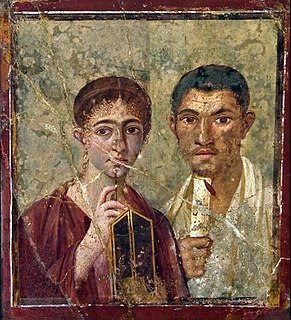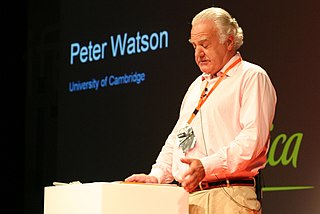
In law, fraud is intentional deception to secure unfair or unlawful gain, or to deprive a victim of a legal right. Fraud can violate civil law or criminal law, or it may cause no loss of money, property, or legal right but still be an element of another civil or criminal wrong. The purpose of fraud may be monetary gain or other benefits, for example by obtaining a passport, travel document, or driver's license, or mortgage fraud, where the perpetrator may attempt to qualify for a mortgage by way of false statements.

Forgery is a white-collar crime that generally refers to the false making or material alteration of a legal instrument with the specific intent to defraud anyone. Tampering with a certain legal instrument may be forbidden by law in some jurisdictions but such an offense is not related to forgery unless the tampered legal instrument was actually used in the course of the crime to defraud another person or entity. Copies, studio replicas, and reproductions are not considered forgeries, though they may later become forgeries through knowing and willful misrepresentations.

In the study of history as an academic discipline, a primary source is an artifact, document, diary, manuscript, autobiography, recording, or any other source of information that was created at the time under study. It serves as an original source of information about the topic. Similar definitions can be used in library science and other areas of scholarship, although different fields have somewhat different definitions.

Identity theft occurs when someone uses another person's personal identifying information, like their name, identifying number, or credit card number, without their permission, to commit fraud or other crimes. The term identity theft was coined in 1964. Since that time, the definition of identity theft has been statutorily defined throughout both the U.K. and the U.S. as the theft of personally identifiable information. Identity theft deliberately uses someone else's identity as a method to gain financial advantages or obtain credit and other benefits, and perhaps to cause other person's disadvantages or loss. The person whose identity has been stolen may suffer adverse consequences, especially if they are falsely held responsible for the perpetrator's actions. Personally identifiable information generally includes a person's name, date of birth, social security number, driver's license number, bank account or credit card numbers, PINs, electronic signatures, fingerprints, passwords, or any other information that can be used to access a person's financial resources.

The term "white-collar crime" refers to financially motivated, nonviolent or non-directly violent crime committed by individuals, businesses and government professionals. It was first defined by the sociologist Edwin Sutherland in 1939 as "a crime committed by a person of respectability and high social status in the course of their occupation". Typical white-collar crimes could include wage theft, fraud, bribery, Ponzi schemes, insider trading, labor racketeering, embezzlement, cybercrime, copyright infringement, money laundering, identity theft, and forgery. White-collar crime overlaps with corporate crime.

Provenance is the chronology of the ownership, custody or location of a historical object. The term was originally mostly used in relation to works of art but is now used in similar senses in a wide range of fields, including archaeology, paleontology, archives, manuscripts, printed books, the circular economy, and science and computing.

Art theft, sometimes called artnapping, is the stealing of paintings, sculptures, or other forms of visual art from galleries, museums or other public and private locations. Stolen art is often resold or used by criminals as collateral to secure loans. Only a small percentage of stolen art is recovered—an estimated 10%. Many nations operate police squads to investigate art theft and illegal trade in stolen art and antiquities.

Art forgery is the creating and selling of works of art which are falsely credited to other, usually more famous artists. Art forgery can be extremely lucrative, but modern dating and analysis techniques have made the identification of forged artwork much simpler.
Racketeering is a type of organized crime in which the perpetrators set up a coercive, fraudulent, extortionary, or otherwise illegal coordinated scheme or operation to repeatedly or consistently collect a profit.

Peter Frank Patrick Watson is a British intellectual historian and former journalist, now perhaps best known for his work in the history of ideas. His journalistic work includes detailed investigations of auction houses and the international market in stolen antiquities.

Noah Charney is an American art historian and novelist. He is the author of The Art Thief, a mystery novel about a series of thefts from European museums and churches, and is the founder of the Association for Research into Crimes against Art.
ARCA's Postgraduate Certificate Program in Art Crime and Cultural Heritage Protection is an unaccredited multidisciplinary “postgraduate” certificate program that specializes in the study of art crime and cultural property protection. The course programming consists of 10–11 weeks of academic instruction at the postgraduate level and is hosted in Amelia, Italy. The instruction covers a wide variety of theoretical and practical elements of art and heritage crime and examines art crime's interconnected world of art criminals, investigators, lawyers and art historians. The courses include comprehensive lectures and discussions exploring art crime, its nature and impact, as well as what is currently being done to mitigate it.
The Association for Research into Crimes against Art (ARCA) is a research and outreach organization that works to promote research and the study of art crime and cultural heritage protection. ARCA aims to bridge the gap between the practical and theoretical by fostering collaboration between foreign and domestic law enforcement officials, security consultants, academics, lawyers, archaeologists, insurance specialists, criminologists, art historians, conservators, and others. Their goal is to raise public awareness about art related crime and to better preserve the world's collective cultural heritage.
Stealing the Mystic Lamb: The True Story of the World's Most Coveted Masterpiece is a non-fiction book by art historian Noah Charney. The book was published in 2010 by PublicAffairs. It tells the story of The Ghent Altarpiece, a monumental oil painting by the Flemish master Jan van Eyck, currently on display in the cathedral of Saint Bavo, in the city of Ghent. The work is arguably the most influential painting in history, and it is also the most frequently stolen artwork of all-time. Charney's book tells the story of the artwork and the many crimes and mysteries of which it was the victim since its completion in 1432.

Dagobert Frey was an Austrian art historian, a criminal responsible for the theft of the most valuable European and Polish collections from the Warsaw and Kraków museums and national art galleries during the Nazi German occupation of Poland.
Art Recovery International is a private company that provides due diligence, dispute resolution and art recovery services to the international art market and cultural heritage institutions. It is headquartered in Venice, Italy.

The Crime Book is a non-fiction volume co-authored by American crime writers Cathy Scott, Shanna Hogan, Rebecca Morris, Canadian author and historian Lee Mellor, and United Kingdom author Michael Kerrigan, with a foreword for the U.S. edition by Scott and the U.K. edition by crime-fiction author Peter James. It was released by DK Books under its Big Ideas Learning imprint in May 2017.
Ruth Bettina Birn is a Canadian historian and author whose main field of research is the security forces of Nazi Germany and their role in the Holocaust. For nearly 15 years, she held a position of chief historian in the war crimes section at the Canadian Department of Justice. Birn co-authored A Nation on Trial: The Goldhagen Thesis and Historical Truth with Norman Finkelstein.
Hanns Christian Löhr is a German historian.
Donna Yates is an archaeologist and Associate Professor in the Department of Criminal Law and Criminology at Maastricht University. Her research considers transnational illicit trade in cultural objects, art and heritage crime including Looted art and the Antiquities trade, and white collar crime.











